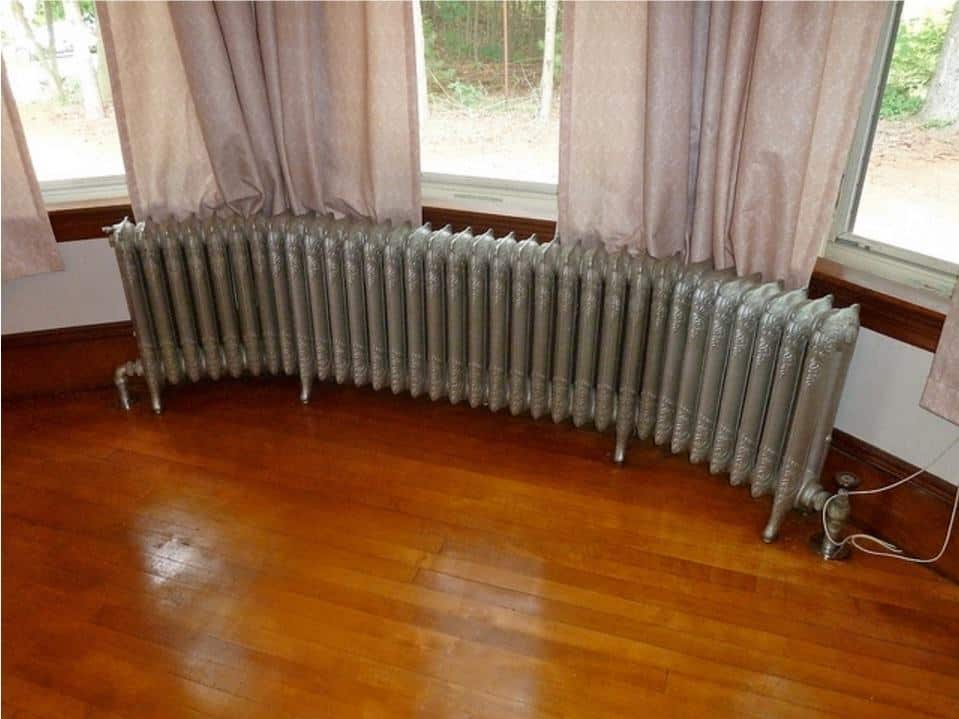A good quality radiator is essential to keeping you warm through cold weather, and investing in its maintenance and care will help to keep your energy bills down and make your radiator last longer. Here are our tips for prolonging the life expectancy of your curved radiator.

Curved radiators are valued for their aesthetic appeal and space-saving design, and it’s no wonder that they are becoming increasingly popular for homeowners. While high-quality products are built using state-of-the-art materials and designed with long-term durability in mind, there are things you can do to further increase the lifespan of your curved radiator at home.
What to Avoid to Keep Your Curved Radiator in Good Health
Here’s what to watch out for and avoid, so that your radiator stays in good health all year round.
Obstructed pipes
One of the most common causes of obstruction in a radiator’s pipes is air. When cold water is heated it releases air, which rises and can become trapped in the upper parts – this is called an air lock. Because the cold air is blocking the hot air from rising, it may feel as though your radiator isn’t heating up to its intended temperature. A simple way to test for air obstruction is by carefully feeling the bottom of the radiator. If the bottom is warm but the top is cold, it is most likely because of an air lock.
It may sound gruesome, but bleeding refers to airing your radiator out so that all of the cold air is released. To start, turn off the heating. Open the air valve on your radiator and have a rag handy to wipe up any water spillage. You’ll know that the air has cleared out when a steady stream of water starts to flow out, at which point you can close the valve. To ensure that your pipes remain unobstructed, it’s recommended that you repeat radiator bleeding every year.
Leaks
As with all radiators, leaks are a common threat. The typical source of leaking is through a valve; either because the valve is old or damaged. Leaks also occur when a valve hasn’t been properly closed or gets stuck in a half-open position. Corrosion is also a probable cause of leaks. Even in radiators made out of high-quality material, the effect of water on metal will cause some corrosion that can lead to minuscule holes in the metal.
The most important step to take when it comes to leaks is prevention. Regular inspection of your radiator and all of its parts will alert you to possible corrosion or damage. Radiator specialists, like those from Radiator Curving in their Leicestershire Outlet, can advise on prevention methods and show you what to look out for down the line. If you do spot even the tiniest of leaks, call a plumber right away – do not wait for the leak to get worse. By then it may be too late, and what could have been solved with a quick part replacement may escalate to replacing your radiator.
Furniture Blocking
Because a curved radiator will save you space, it can be tempting to use that extra real estate to place furniture table directly in front. The problem lies in blocking air flow from the radiator; if air has no room to rise the room will feel cold. Your radiator will still be functioning properly, but you won’t feel its effects because obstacles are keeping air trapped in a pocket. This means you’ll crank the temperature way up, causing your radiator to work harder, which can lead to faster burn-out.
The easiest way to prevent this problem is by being strategic with furniture placement. If space is at a premium, consider custom-made furniture options that fit around the radiator or work with its shape to prevent direct blocking.
The key to radiator health is regular vigilance and occasional maintenance. By watching out for these common problems, you will enjoy the benefits of your radiator at home for years to come!
This article is contributed by Katrina Fernandez
























No Comments